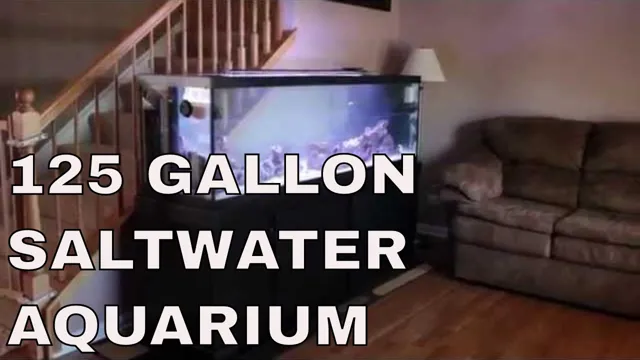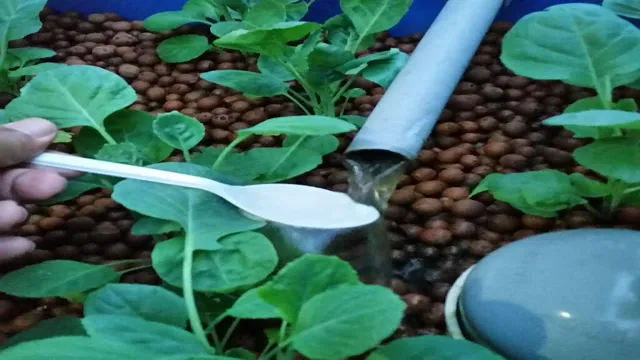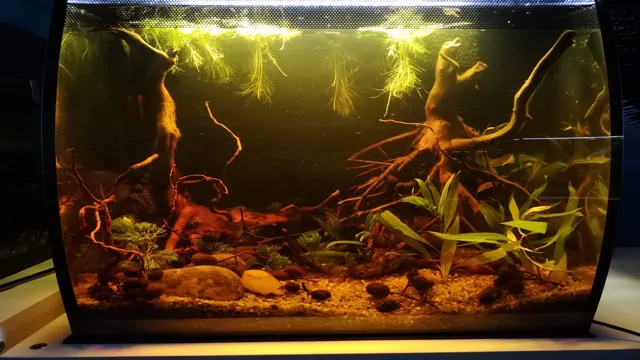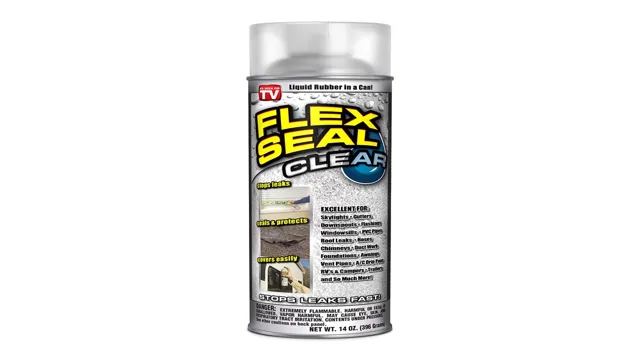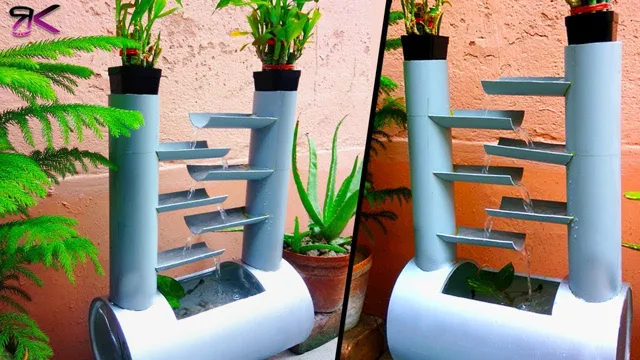Adding carbon dioxide to an aquarium can be a game-changer for the health and growth of your aquatic plants. Not only does it promote proper photosynthesis, but it can also boost the overall aesthetic appeal of your tank. However, with so many methods and products available, it can be overwhelming to know where to start.
In this blog post, we will explore the various ways to add carbon dioxide to your aquarium, from DIY methods to professional-grade systems. So grab a cup of coffee and let’s dive in!
Understanding Carbon Dioxide in Aquariums
When it comes to maintaining a healthy and thriving aquarium, understanding the role of carbon dioxide is crucial. Carbon dioxide is a key element needed for the growth and survival of aquatic plants, which in turn can provide shelter and food for the fish living in the aquarium. So, how do you get carbon dioxide in water aquariums? One way is through the use of a CO2 injection system, which can help regulate and increase the levels of carbon dioxide in the water.
This system involves a regulator, tubing, and diffuser to safely and effectively inject CO2 into the aquarium. Another option is to use natural sources of carbon dioxide, such as adding an air stone or running a bubble filter. It’s important to monitor carbon dioxide levels regularly to ensure a healthy balance within the aquarium ecosystem.
By understanding the importance of carbon dioxide and how to properly introduce it into your aquarium, you can create a thriving underwater world for your aquatic pets.
The Importance of Carbon Dioxide in Aquariums
Carbon Dioxide in Aquariums If you’re new to keeping an aquarium, you may not have thought about the importance of carbon dioxide (CO2) in the tank. In fact, CO2 is essential for the well-being of most aquatic plants and helps to maintain a healthy ecosystem in your aquarium. When plants photosynthesize, they remove CO2 from the water and release oxygen, which is vital for the health of fish and other organisms in the tank.
However, without sufficient CO2, plants can’t grow properly and may start to wither or die. That’s why it’s crucial to maintain proper levels of CO2 in your aquarium, whether you’re keeping a few plants or running a full-fledged aquascape. There are several ways to introduce CO2 into your aquarium, including using a CO2 injection system or adding CO2-rich substrates.
By understanding the importance of CO2 in your aquarium and taking steps to maintain healthy levels, you can create a thriving underwater ecosystem that’s a joy to behold.
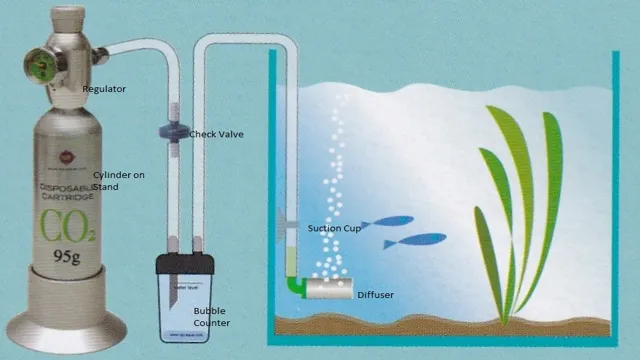
Measuring Carbon Dioxide Levels in Your Aquarium
One important aspect of successfully maintaining an aquarium is understanding the role of carbon dioxide. This gas is naturally produced by the living organisms in the tank, and it plays a crucial role in many of the chemical processes that occur within the aquarium ecosystem. However, too much carbon dioxide can also be harmful to the health of your fish and plants.
That’s why it’s important to regularly measure the levels of carbon dioxide in your tank and make any necessary adjustments. You can do this using a CO2 test kit, which will give you an accurate reading of the levels of carbon dioxide present in the water. By staying on top of your carbon dioxide levels, you can help ensure a healthy and thriving aquarium for your aquatic pets.
Methods for Adding Carbon Dioxide to Your Aquarium
If you’re looking to add carbon dioxide (CO2) to your aquarium, there are several methods to consider. The simplest method is to use DIY CO2 injectors, which involve creating a mixture of yeast, sugar, and water in a plastic bottle connected to tubing. As the yeast consumes the sugar, CO2 is slowly released into the aquarium. (See Also: How to Know if Your Aquarium Needs a Trim: Tips and Tricks for a Pristine Tank)
Another option is to use compressed CO2 cylinders, which can be regulated with a controller to maintain a consistent level of CO This method is more reliable and precise, but also more expensive. Additionally, you can add live plants to your aquarium, which naturally release CO2 during photosynthesis.
However, keep in mind that adding too much CO2 can be harmful to your fish, so it’s important to monitor the levels regularly and adjust accordingly. Overall, adding CO2 to your aquarium can enhance plant growth and create a healthier environment for your aquatic pets.
Using a CO2 Injection System
If you’re looking for a way to add carbon dioxide to your aquarium, a CO2 injection system might be just what you need. There are a few different methods you can use to add CO2 to your tank, but a dedicated injection system is one of the most effective and efficient. These systems typically consist of a CO2 tank, a regulator, and a diffuser that disperses the gas into your aquarium water.
It’s important to get the right balance of CO2, though–too little won’t have much of an effect, but too much can be harmful to your fish and other aquatic creatures. Additionally, make sure you have a good flow rate to ensure even distribution throughout your tank. With a little bit of testing and tweaking, you can get your CO2 injection system running smoothly and enjoy the benefits of enhanced plant growth and a healthier, more vibrant aquarium.
Using DIY Yeast CO2
DIY yeast CO2, aquarium, carbon dioxide If you’re looking to add carbon dioxide to your aquarium without breaking the bank, DIY yeast CO2 might be the perfect solution for you. There are a couple of methods for creating DIY yeast CO2, but they all involve creating a mixture of yeast, sugar, and water that will produce carbon dioxide as it ferments. One popular method involves using a plastic bottle with a needle valve to control the release of the CO2 into your aquarium.
Simply mix the ingredients together, add the mixture to the bottle, and attach a tubing line to the needle valve. As the mixture ferments, it will release CO2, which you can then direct into your aquarium. Another method involves using a DIY reactor, which is essentially a container that you fill with the yeast mixture and attach to your aquarium’s filtration system.
This method is a bit more complex and requires a bit more setup, but it can be a more efficient way to add CO2 to your aquarium. Regardless of which method you choose, DIY yeast CO2 is a cost-effective way to help keep your aquarium healthy and thriving.
Using Liquid Carbon
Liquid Carbon If you are looking for a method to add carbon dioxide to your aquarium, using liquid carbon might be the solution for you. This method involves adding a carbon supplement directly into the water column, which will provide a steady source of carbon for your plants without the need for gas injection. In order to use liquid carbon, you will need to carefully follow the instructions provided by the manufacturer, as too much carbon can be harmful to your aquatic pets.
One of the benefits of using this method is that it is much cheaper than using pressurized gas systems, and it doesn’t require any special equipment like diffusers or reactors. However, it is important to note that liquid carbon may not be as effective as gas injection, particularly for larger aquariums with higher demand for carbon dioxide. Overall, using liquid carbon can be a convenient and cost-effective way to add carbon to your aquarium, but it’s important to weigh the pros and cons before deciding whether it’s right for you.
Tips for Maintaining Carbon Dioxide Levels in Your Aquarium
If you’re wondering how to get carbon dioxide in your water aquarium, there are a few tips to keep in mind. Firstly, you need to ensure that your aquarium receives enough light to encourage the growth of plants. These plants will then produce oxygen during the day through photosynthesis, which can help regulate CO2 levels. (See Also: How Thick Should Glass Be for an Aquarium: A Comprehensive Guide)
If you notice a decrease in CO2 levels, you can consider adding a CO2 injection system. This will help maintain the ideal levels of carbon dioxide in your aquarium. Additionally, be sure to monitor the pH levels of your water regularly, as low pH can lead to an increase in CO2 levels.
By following these tips, you can help maintain a healthy aquarium environment for your fish and aquatic plants.
Regular Testing and Monitoring
Maintaining appropriate carbon dioxide levels in your aquarium is vital for the health and well-being of your fish. To ensure that the CO2 levels are balanced, it is essential to conduct regular testing and monitoring. Testing kits are readily available in pet stores and online, and it is recommended to test the water twice a week.
Once you have the readings, compare them to the recommended levels for your particular fish species. If the levels are not within the proper range, you can make adjustments by adding or reducing plants, changing the water, or utilizing a CO2 system. By monitoring and adjusting the levels accordingly, you can create a safe and healthy environment for your aquatic pets to thrive in.
Providing Sufficient Light and Nutrients
Maintaining carbon dioxide levels in your aquarium is crucial for the health and well-being of your aquatic creatures. The most important thing to remember is that plants need carbon dioxide to photosynthesize and produce oxygen. So, it’s crucial to provide sufficient light and nutrients to promote plant growth and balance the carbon dioxide levels.
You can achieve this by using a high-quality LED light, which is energy-efficient and provides optimal lighting conditions for your plants. Additionally, using a nutrient-rich substrate or adding fertilizers regularly can help support plant growth and reduce carbon dioxide buildup in the water. It’s also essential to monitor the CO2 levels in your aquarium using a carbon dioxide test kit and adjust the levels if necessary to ensure that your fish and plants are thriving.
By implementing these simple tips, you can maintain the perfect balance of carbon dioxide in your aquarium and provide a healthy and thriving environment for your aquatic pets.
Conclusion and Final Thoughts
In conclusion, getting carbon dioxide in your water aquarium is all about finding the right balance between science and care. It’s like dating – you need to give your aquarium just the right amount of attention so that it doesn’t feel overwhelmed or neglected. And just like in dating, communication is key! Make sure you’re keeping tabs on your aquarium’s pH levels and using the right tools to get that perfect balance.
Before you know it, your fish will be swimming in a sea of beautifully oxygenated water, and you’ll be the envy of all the aquarium enthusiasts in your social circle. So let’s raise a glass (of water, of course) to finding that perfect carbon dioxide match for your aquarium – cheers!” (See Also: How to Kill Aquarium Cyclops: Tips and Tricks for Eradicating the Pesky Pest)
FAQs
Why is it important to have carbon dioxide in a water aquarium?
Carbon dioxide is essential for aquatic plant growth. It is a necessary component in photosynthesis, which helps plants produce oxygen and maintain healthy water quality.
How can I naturally add carbon dioxide to my water aquarium?
You can add carbon dioxide to your water aquarium naturally by keeping live plants in your tank. They will produce carbon dioxide as a byproduct of photosynthesis.
Can I use CO2 injection to add carbon dioxide to my water aquarium?
Yes, you can use CO2 injection to add carbon dioxide to your water aquarium. This method involves using a carbon dioxide system to directly inject CO2 into the water.
How often should I add carbon dioxide to my water aquarium?
The frequency of carbon dioxide additions will depend on the specific needs of your aquarium and the types of plants you have. Generally, it is recommended to add carbon dioxide daily or every other day.
What is the ideal level of carbon dioxide in a water aquarium?
The ideal level of carbon dioxide in a water aquarium should be between 20-30 ppm (parts per million).
Can too much carbon dioxide harm my fish?
Yes, too much carbon dioxide in the water can be harmful to fish. It can cause respiratory issues and even death if levels are too high.
How can I monitor the carbon dioxide levels in my water aquarium?
You can monitor carbon dioxide levels with a CO2 drop checker or pH probe. These tools will allow you to accurately measure the concentration of carbon dioxide in your aquarium water.


